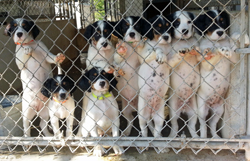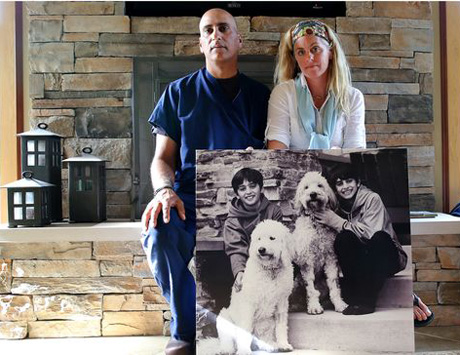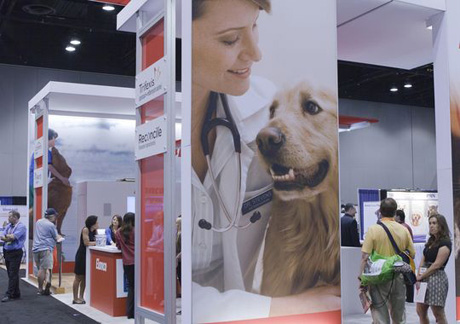Indianapolis Star investigates complex issue of pet meds industry
The story idea began when Indianapolis Star reporter John Russell learned of the extraordinary efforts undertaken by Dr. Nimu Surtani and his wife Laura to determine the cause of death of Sesame, their golden doodle. Sesame was an otherwise healthy dog that died quickly and suddenly for no obvious reason.
The couple’s research led them to Trifexis, a flea and tick medication developed by Elanco, the animal drug division of Eli Lilly and Co., which is headquartered in Indianapolis.
The idea turned into a lengthy three-part series written by Russell and edited by Steve Berta, The Star’s Senior Content Coach. The pieces were published on December 13, 18 and 21. In the opening paragraphs, Russell states:
“Yet, in the first examination by a major news organization of one of the fastest-growing segments of the pharmaceutical industry, The Star found an industry far different from the human drug market, one with higher risk of unforeseen side effects, a legal arena that offers little protection to pet owners and marketing tactics that have been eliminated from the human drug market.
“The Star examined public records, studies and drug reaction data, and conducted interviews with company officials, pet owners, scientists, lawyers, epidemiologists, regulators and veterinarians. They told the story of an industry that is looking for ways to shore up declining revenues from human drugs, repurposing molecules that had an array of original uses for people and crops, and pushing government officials to speed up the approval process.”
Jerry and I don’t necessarily agree or disagree with Russell’s series but we thought it interesting and thought-provoking enough to post. Most importantly, we are not denigrating veterinarians. We have wonderful relationships with several vets. They are integral parts of our business and provide invaluable service and guidance. And one of my brothers, Jake, just retired from a decades-long career as a vet.
Today, The Indianapolis Star published an opinion piece written by the president and president-elect of the Indiana Veterinary Medical Association.
That’s the best feature of investigative journalism. It opens doors, raises awareness and starts discussions.
Below are excerpts from each part of the series.
Part 1: Pets at risk
“Last year, the third-biggest initial public offering on Wall Street was a pet medicine company, Zoetis, a spinoff from drug giant Pfizer. This year, Lilly said it would pay $5 billion to acquire Novartis’ animal medicine, which would make Lilly the animal health industry’s second-largest player.
“Some drugs aren’t even approved for animal use but are commonly prescribed to animals. Their safety record isn’t even tracked by the government, meaning it’s impossible for consumers to make informed decisions.
“In stark contrast to the world of human medicine, veterinarians, researchers and industry are free to work closely together, with little to no transparency about drug company freebies and speaking fees paid to veterinarians.
“The FDA says it lacks the regulatory authority to mandate the recall of animal or human drugs. All it can do is issue a warning and work with manufacturers to launch a voluntary recall.”
Part 2: Drug companies’ loose purse strings woo vets
“The AVMA, the nation’s largest association of veterinarians, with 85,000 members, accepts hundreds of thousands of dollars a year from drugmakers for its massive conventions.
“That’s not to say that those who are doing the prescribing — the nation’s veterinarians — don’t have animals’ best interest at heart, or are especially susceptible to industry money.
“But The Star’s investigation reveals a greater potential for abuse because the pet medicine industry is allowed to target veterinarians with marketing practices banned from the realm of human medicine.
“In recent decades, pharmaceutical companies have been investing billions of dollars in pet medicines for the promise they hold to launch new drugs quickly and profitably. And they treat veterinarians not just as medical professionals, but as an important distribution channel to be wooed every step of the way.
“But veterinarians also serve another important role: as the primary distribution arm of the medicines they prescribe. Most human drugs are purchased at pharmacies, but the nation’s 90,000 veterinarians sell most of the nation’s pet medicines. And they make money on every prescription they dispense.
“In fact, drug sales provide as much as 30 percent of a typical veterinary clinic’s revenues, according to Veterinary Practice News, a trade journal. And veterinary consultants speak openly about the need to more than double the price of drugs to turn a healthy profit.”
Part 3: What’s a dog’s love worth? Legally, nothing.
“In many ways, the economics of the pet medicine industry are knotted in a single question: What’s a dog’s love worth? It’s a question that’s fraught with consequences for the drug industry and pet owners alike.
“If you consider your dog or cat to be a member of the family — not just a pet or a piece of property — then you are more likely to take better care of it. You will visit the vet more often. You probably will buy more medicine.
“According to the American Veterinary Medical Association, if you view your dog as a family member, you will spend about $438 a year on care. Those who consider a dog property — as laws in most states do — spend about $190.
“The problem, some attorneys, economists and animal rights groups say, is that stopping pet owners from collecting meaningful damages breaks down an important part of the free-market system.
“When pet owners can’t hold companies responsible in court, manufacturers have little to fear in launching potentially harmful products.
“”If the liability is limited,” said John P. Young, vice president of the Indiana Trial Lawyers Association, “why would they put all that money into testing and research?”
“Drugmakers would be especially vulnerable to lawsuits, “because these manufacturers are perceived to have deep pockets, particularly when compared to local veterinarians.””







